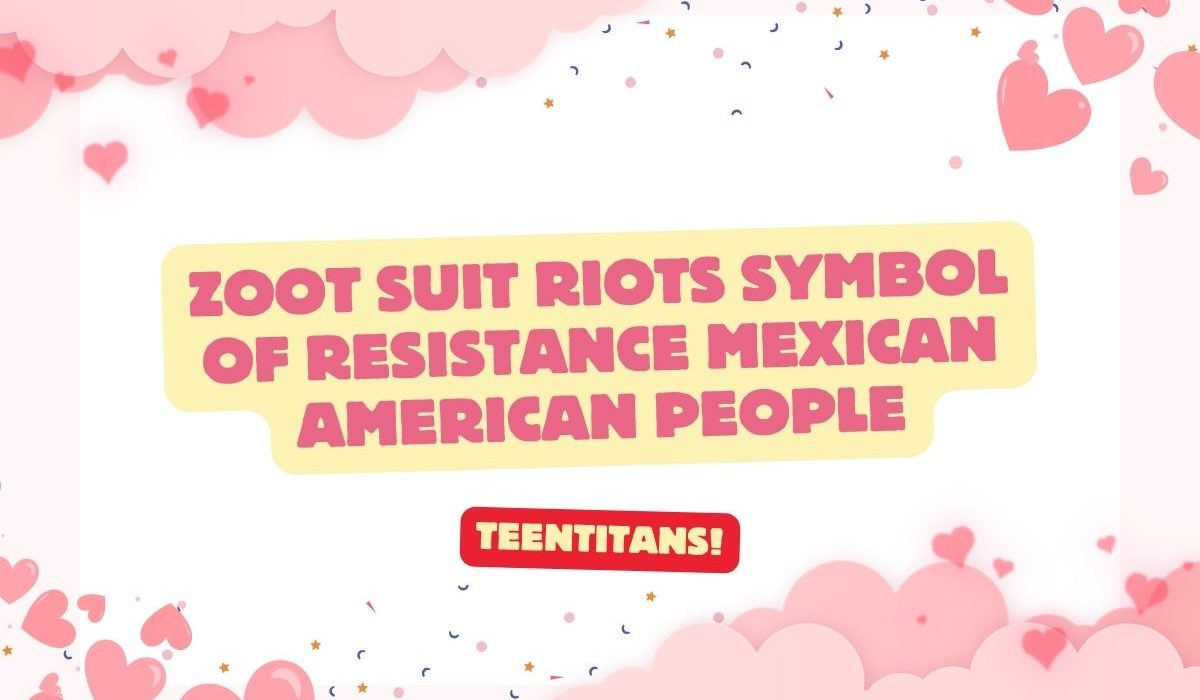Zoot Suit Riots Symbol Of Resistance Mexican American People

Introduction to Zoot Suit Riots
The Zoot Suit Riots were a series of violent clashes that occurred in Los Angeles, California in June 1943. The riots were fueled by tensions between Mexican American zoot suit-wearing youths and white American servicemen stationed in the city during World War II. The servicemen viewed the zoot suit as a symbol of rebellion and unpatriotic behavior, leading to a wave of attacks on Mexican American youths wearing the distinctive attire. The riots highlighted the racial and social tensions present in American society at the time, and sparked a broader conversation about discrimination and prejudice against minority groups.
Historical Context of Mexican American Discrimination
Mexican American discrimination has a long history in the United States, dating back to the mid-19th century when the United States acquired large territories in the Southwest through the Treaty of Guadalupe Hidalgo. Despite being granted U.S. citizenship, Mexican Americans faced widespread discrimination and marginalization, particularly during the early 20th century when anti-immigrant sentiments and racial prejudices were prevalent. This discrimination manifested in various forms, including segregation, unequal access to education and employment opportunities, and violence against Mexican Americans. The legacy of this historical discrimination continues to impact Mexican Americans today, as they continue to face systemic barriers to social and economic advancement.
3. The Rise of Zoot Suit Culture
Zoot suit culture emerged in the United States in the 1940s, particularly among African American and Mexican American youth in urban areas. The distinctive oversized suits, wide-brimmed hats, and flamboyant style of dress were a form of rebellion against mainstream societal norms and a way for marginalized communities to assert their identity and express their individuality. The rise of zoot suit culture was also a reflection of the changing social and cultural landscape of the time, as young people sought to break free from traditional expectations and create their own subversive fashion statements. The zoot suit became a symbol of resistance and defiance, challenging conventional ideas of masculinity and challenging the status quo.
Trigger Events Leading to the Riots
The trigger events leading to the riots were a combination of longstanding racial tensions, police brutality, and systemic inequality. The murder of George Floyd, an unarmed Black man, by a white police officer in Minneapolis sparked nationwide outrage and protests. This incident, along with other instances of police violence against people of color, highlighted the deep-rooted issues of racism and injustice in the United States. The lack of accountability and justice for these acts of violence further fueled the anger and frustration of marginalized communities, ultimately leading to widespread demonstrations and unrest.
Violence and Tension during the Riots
During the riots, violence and tension were palpable as clashes between protestors and law enforcement escalated. The sound of shattered glass and explosions filled the air as fires raged in the streets. Protestors hurled rocks and Molotov cocktails while police responded with tear gas and rubber bullets. The scene was chaotic and chaotic, with the constant threat of violence looming over the entire city. The tension was heightened as both sides seemed unwilling to back down, resulting in a volatile and dangerous situation that left many injured and buildings destroyed.
Role of Media in Portraying Mexican Americans
The media plays a significant role in shaping the portrayal of Mexican Americans in society. Unfortunately, Mexican Americans are often depicted in a negative light, perpetuating stereotypes and misconceptions. They are frequently shown as criminals, illegal immigrants, or lazy individuals, reinforcing harmful biases and discrimination. It is crucial for the media to accurately represent the diversity and complexity of the Mexican American community, showcasing their contributions, achievements, and struggles in a more balanced and fair manner. By highlighting their stories and perspectives, the media can help challenge stereotypes and promote understanding and empathy towards Mexican Americans.
Political and Social Implications of the Riots
The riots have significant political and social implications, as they often stem from deep-seated socio-economic inequalities, systemic racism, and political unrest. The riots highlight the failure of governments to address these issues and the frustration and anger felt by marginalized communities. They also bring to light the need for meaningful and lasting change in policies, institutions, and societal attitudes in order to address the root causes of the unrest. The riots serve as a wake-up call for society to reflect on the underlying issues that lead to such outbursts of violence and to work towards creating a more just and equitable society for all.
Community Response and Solidarity
In times of crisis, community response and solidarity are crucial in providing support and hope to those in need. Whether it be through organizing food drives, offering emotional support, or simply checking in on neighbors, coming together as a community can make a significant impact in times of hardship. By standing together and showing solidarity, we can create a strong network of support that uplifts and empowers each other during difficult times.
Legacy of the Zoot Suit Riots
The Zoot Suit Riots of 1943 left a lasting legacy on American history, highlighting the racial tensions and discrimination faced by Mexican Americans and other minority groups. The violent attacks on young Latino men wearing zoot suits sparked outrage and brought attention to the systemic racism and prejudice that was pervasive in society. The riots also led to discussions about civil rights and the need for social justice, paving the way for future movements advocating for equality and inclusion. The legacy of the Zoot Suit Riots serves as a reminder of the ongoing struggle for racial justice and the importance of standing up against discrimination and bigotry.
Lessons Learned from the Riots
The riots that have occurred across the world in recent years have taught us valuable lessons about the deep-rooted issues of inequality, racism, and social injustice. These events have highlighted the urgent need for systemic change and reform in our societies to address the underlying causes of unrest and anger. It is clear that marginalized communities have been pushed to their breaking points, and their voices must be heard and their grievances addressed in order to build a more just and equitable future for all. The riots have also underscored the importance of listening, empathy, and understanding in bridging the divides in our society and working towards a more inclusive and peaceful world.










